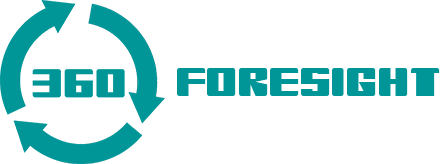The futurist business, in all its dimensions, is a relatively young discipline. And instead of having developed as one tightly knit community, there are many different branches. Take trend research and strategic foresight, two of the mostly practiced disciplines, tend to employ people with very different backgrounds, address different questions and most importantly tend to take a different time horizon when looking at the future. In recent times, however, this might be changing as the practice of trend research and strategic foresight seem to approach each other more and more. New connections helps to advance both their practices. Futurist Societies and practitioners networks show that futurists are nowadays eager to learn from each other, and move beyond their own school of thought.
All futurists, but worlds apart?
Different roles and questions
Traditionally, trend research tends to be associated with concept and product development, or marketing strategy. Success in all of these branches implies anticipating the Zeitgeist, developing something that resonates with the next new thing. Trend research tend to focus on prediction and forecasting of trends. Strategic foresight on the other hand, is very reluctant with predictions and emphasise uncertainty. They are often asked for in organizational strategy development. The questions now have to do with longer term (and more uncertain) changes that only become fully visible once you look at a larger picture over decades of time.
Different backgrounds
While people from all sorts of backgrounds work in futurist business, there tend to be some differences between trend research and strategic foresight. In trend research you will find more people with an artistic background, with an eye for visualization and visual culture. Most professionals in strategic foresight have an academic background and are trained as scientific researchers, whether in exact sciences or social sciences. Therefore, they are very explicit about the methodological aspects of their work.
Different type of product
Given their emphasis on visual culture and their role in concept and product development, it is not surprising that trend researchers tend to produce end products with many visualizations, such as collages. Strategic foresight also uses images and videos for storytelling, particularly in scenario planning. Its focus is narratives and numbers. Therefore, visuals include quantitative information, such as graphs of trend indicators. Indeed, their assignments often ask for a report with scientific underpinning, as in any other research project.
Different time horizon
It follows naturally, that trend researchers have a relatively short time horizon, 1 – 5 years, to look for emerging trends and opportunities. Strategic foresight practitioners look at 10 – 40 years from now to see larger patterns of change that may impact business success in the long run.
Room for misunderstanding each other
There can be lots of misunderstanding between these branches of future studies. Trend researchers find it hard to cope with the long term futures that strategic foresight practitioners have in mind. Strategic foresight practitioners can see the work of trend researchers as far too intuitive and lacking methodological rigor. In addition, they find the idea of forecasting and predicting the future repelling.
Getting closer together
Megatrends as a new framework
Currently these professions tend to get closer together. For one thing, the study of megatrends is interesting to both. Megatrends can be seen as the larger, most influential developments that impact society. They can be used to map and categorize subsets of trends, both for trend insights and for scenario building.
Software for data storage and analysis
While they both work with megatrends, new tools for data analysis have become available that have come in handy for trend researchers and for strategic foresight practitioners. Especially for qualitative data analysis things have become much better and more accessible in resent years. Data acquired from online scanning and your own pictures can now be stored, coded and analyzed with software programs, even in fully functional free versions. Trend research can now be done with more analytic rigor, similar to anthropological research in the fashion of Grounded Theory.
New data analysis options have come available. Methods that didn’t exist before. Meta-scanning for foresight studies, using online data scrapers and data warehouses have added a new dimension to foresight and trend research. With the proliferation of data, big data and ‘big-ish’ data, it is even more interesting to map indicators that may define the future.
Shared principles
In addition to a shared interest in megatrends and analysis / synthesis methods, they have a lot more in common. The first principle in both fields is learning people to ‘listen louder’, see closer and farther to identify (or re-perceive) the signals of change. This sharpening of the senses is typical for futurists. Often part of the job is to train an organization in ‘thinking like a futurist’.
They both offer a space to think about the future, outside the realm of day-to-day urgent business. This is a safe space, where people can reflect on the basic assumptions of the organization’s beliefs. The ‘official’ future is just one of the futures that are laid on the table. This is the moment to reflect on trends and scenarios that are uncomfortable and find out why they are uncomfortable. Would they harm the business or require a different effort? Do the trends touch on taboos in the organization? Only in a safe space these issues can be discussed to gain new insights and translate them into strategic benefits.
As such this reflective practice serves the purpose of synthesis: insight into how trends connect and open up new opportunities. Synthesis needed for insights into new solution spaces, new strategic directions, new concepts, product ideas and business opportunities. New skills that you need to acquire to take this leadership and to be on top of the market, to prepare for change while others looked elsewhere.
This defines an immersive learning process. It means stepping out of the immediate and the urgent to see the relevance of changes that could impact your organization. It also means to see the future not as something inevitable, but to take an active stance in building and shaping the future for the better. This is exactly what futurists help you to do, trend researchers and strategic foresight practitioners alike.
Author: Freija van Duijne


